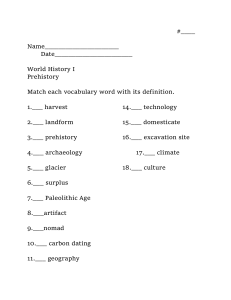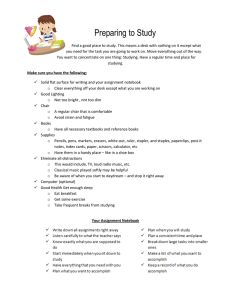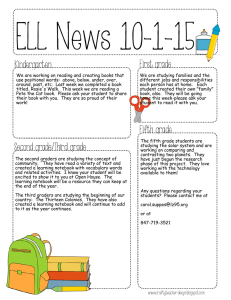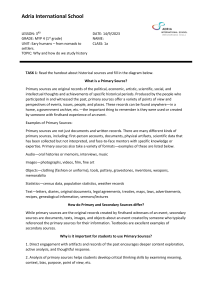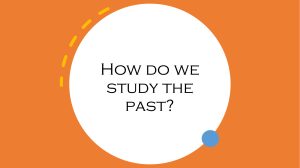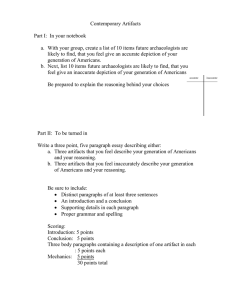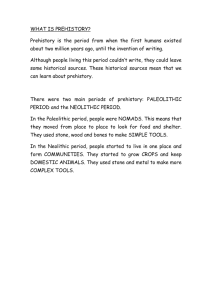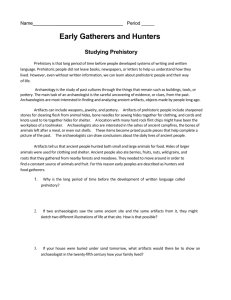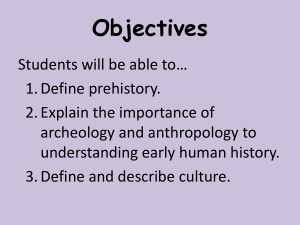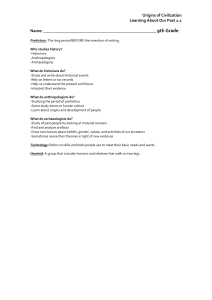Self – Check: Do I have paper, pencil, and my notebook?
advertisement
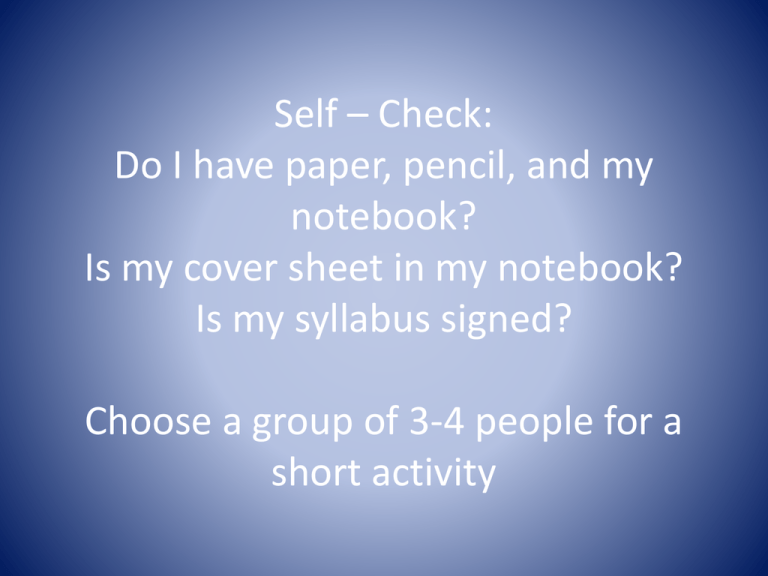
Self – Check: Do I have paper, pencil, and my notebook? Is my cover sheet in my notebook? Is my syllabus signed? Choose a group of 3-4 people for a short activity Activity • In your group, create a definition for HISTORY. • Once you have shared ideas and created a final definition, write it neatly on a sheet of colored paper with a marker. • Time Limit: 5 Minutes What is History? • History is… – The present use of the past. We use it to guide our future. – The effort to reconstruct the past to discover what people thought, what they did, and how their beliefs and actions continue to influence human life. What is History? • History is an account of the past. • Accounts/narratives differ depending on one’s perspective. • We rely on evidence to construct our accounts of the past. • We must question the reliability of each piece of evidence. • Any single piece of evidence is insufficient. • We must consult multiple pieces of evidence in order to build a plausible account. Why do we study it? • “Those who can’t remember the past are condemned to repeat it.” (Avoid past mistakes) • Provides identity, helps us understand our place in the world. How did we get here? Why is our world as it is? • Gives us role models and heroes • Improves judgment, makes us better thinkers How Do We Study It? • Artifacts – the man-made objects uncovered by archaeologists (pottery, furniture, clothing, buildings, monuments, etc…) – The only way we can study prehistory – human history before writing was developed, app. 3,000 B.C. • Primary Sources – a firsthand or eyewitness account of an event by someone who lived through it • Secondary Sources – interpret and analyze primary sources; one or more steps removed from the event Activity • Get back in your previous groups. • Based on these definitions, identify your object or document as an artifact, primary source, or secondary source. Defend your rationale. Examples • • • • • • • • • PRIMARY/ARTIFACTS Diaries Speeches Letters Interviews Film footage Photos Autobiographies Government Records • • • • • SECONDARY Textbooks Encyclopedias Research Papers Biographies Challenges • What is challenging about studying prehistory or ancient history? • What is challenging about studying modern history? Examining Sources Text: What is visible/readable? What information is provided? Context: • What was going on during the time period? • What background info do you have that helps explain what is found in the source? Subtext: What is between the lines? • Author: Who created it and what do we know about them? • Audience: For whom was the author writing? • Reason: Why was the source produced when it was? How do we know if it’s true? • Look for bias • If 2 or more dependable sources record the same thing • But history is still interpretive in nature
